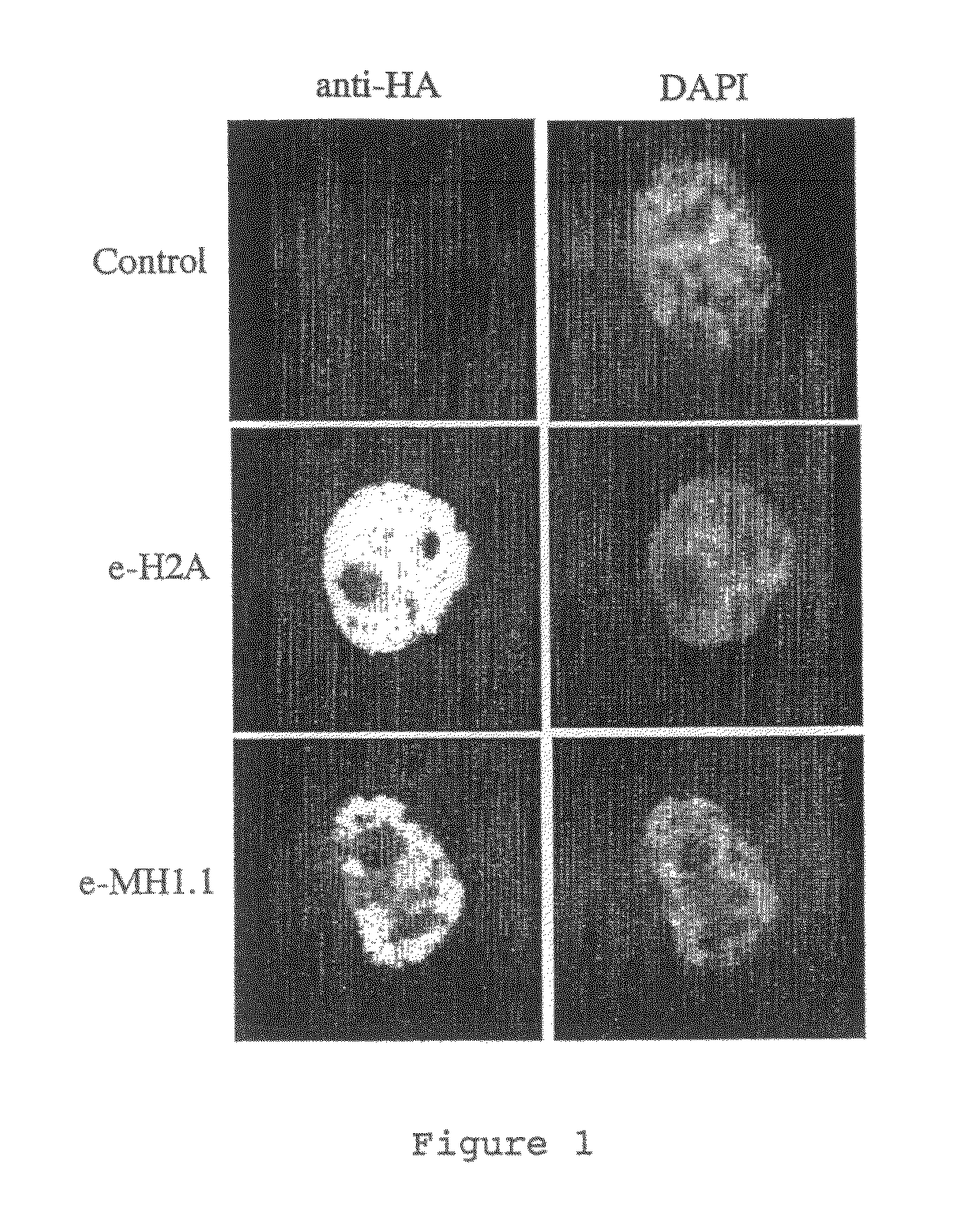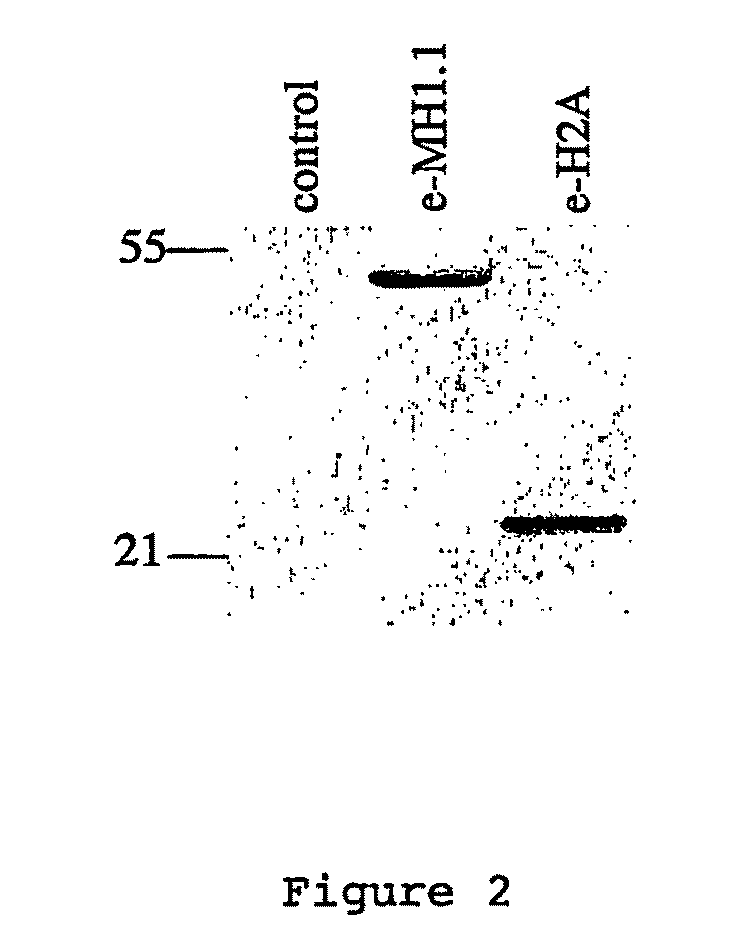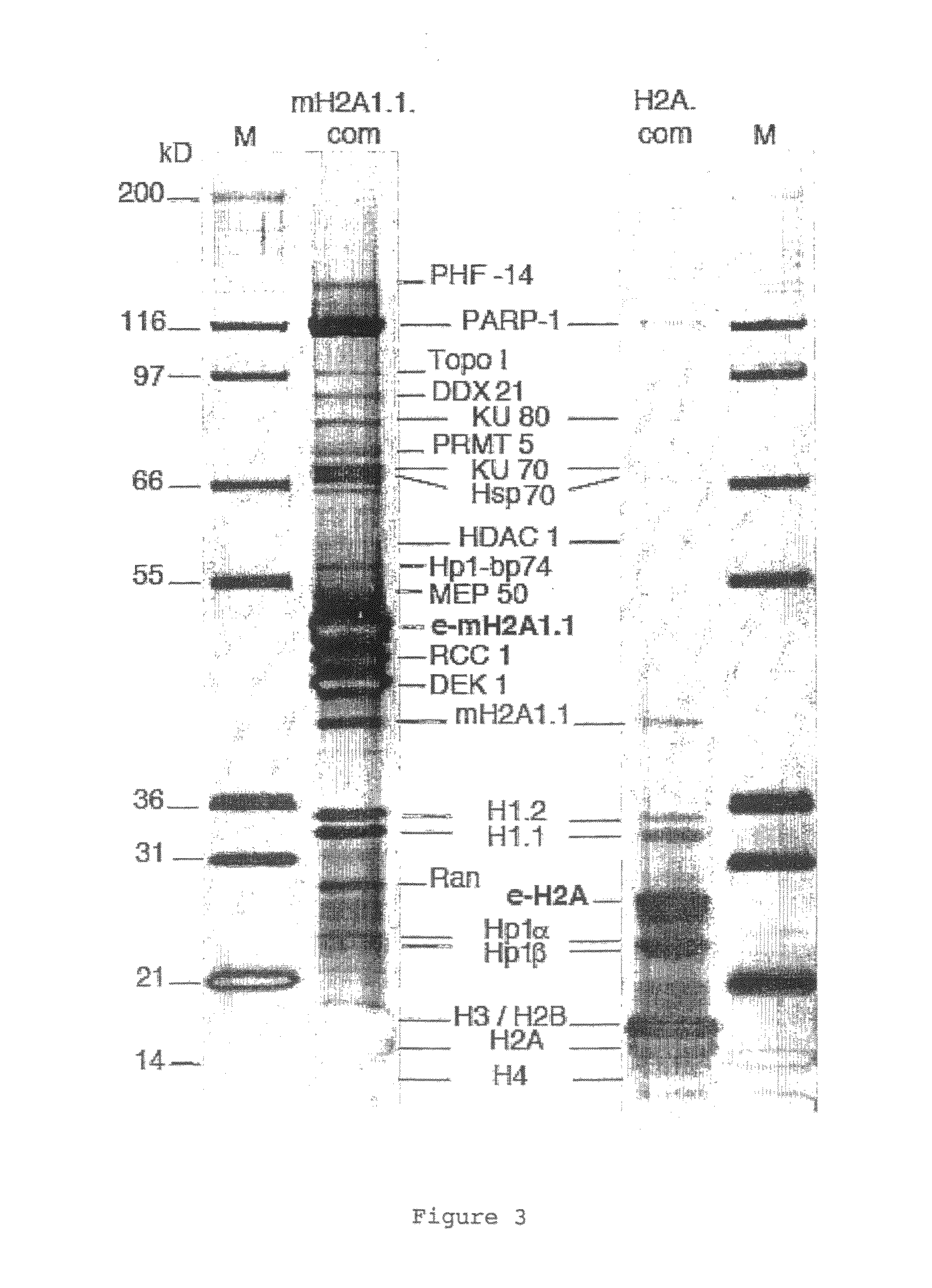PARP inhibitors
a technology of parp inhibitors and inhibitors, which is applied in the direction of drug compositions, immunological disorders, metabolism disorders, etc., can solve the problems of cell damage or death through depletion of energy stores, cell death directly, and atp may also be depleted
- Summary
- Abstract
- Description
- Claims
- Application Information
AI Technical Summary
Benefits of technology
Problems solved by technology
Method used
Image
Examples
examples
1) Plasmid Construction
[0108]The cDNA clones corresponding to the complete coding sequence from H2A (NM—138609; nucleic acid 186 to 1295 of SEQ ID NO: 4), macroH2A1.1 (NM—004893; nucleic acid 174 to 1289 of SEQ ID NO: 5) and macroH2A1.2 (NM—018649; nucleic acid 214 to 1332 of SEQ ID NO: 6) histones were PCR-amplified from image clones purchased from INVITROGEN with primers incorporating restriction enzyme recognition sites. The amplified PCR fragments were then subcloned into the Xho I-Not I sites of pREV-HTF retroviral vector or pGEX-5X.1 vector (AMERSHAM) according to the manufacturer's instruction. Constructs were sequenced to ensure sequence integrity.
2) Expression and Localization of MacroH2A1.1
[0109]MacroH2A1.1 and H2A histones were each stably expressed as fusion proteins with N-terminal double HA and double FLAG™ epitope tags (e-MH1.1, and e-H2A) in HeLa cells by retroviral transduction according to standard protocols. Immunofluorescence experiments were performed on stably ...
PUM
| Property | Measurement | Unit |
|---|---|---|
| pH | aaaaa | aaaaa |
| area | aaaaa | aaaaa |
| size | aaaaa | aaaaa |
Abstract
Description
Claims
Application Information
 Login to View More
Login to View More - R&D
- Intellectual Property
- Life Sciences
- Materials
- Tech Scout
- Unparalleled Data Quality
- Higher Quality Content
- 60% Fewer Hallucinations
Browse by: Latest US Patents, China's latest patents, Technical Efficacy Thesaurus, Application Domain, Technology Topic, Popular Technical Reports.
© 2025 PatSnap. All rights reserved.Legal|Privacy policy|Modern Slavery Act Transparency Statement|Sitemap|About US| Contact US: help@patsnap.com



